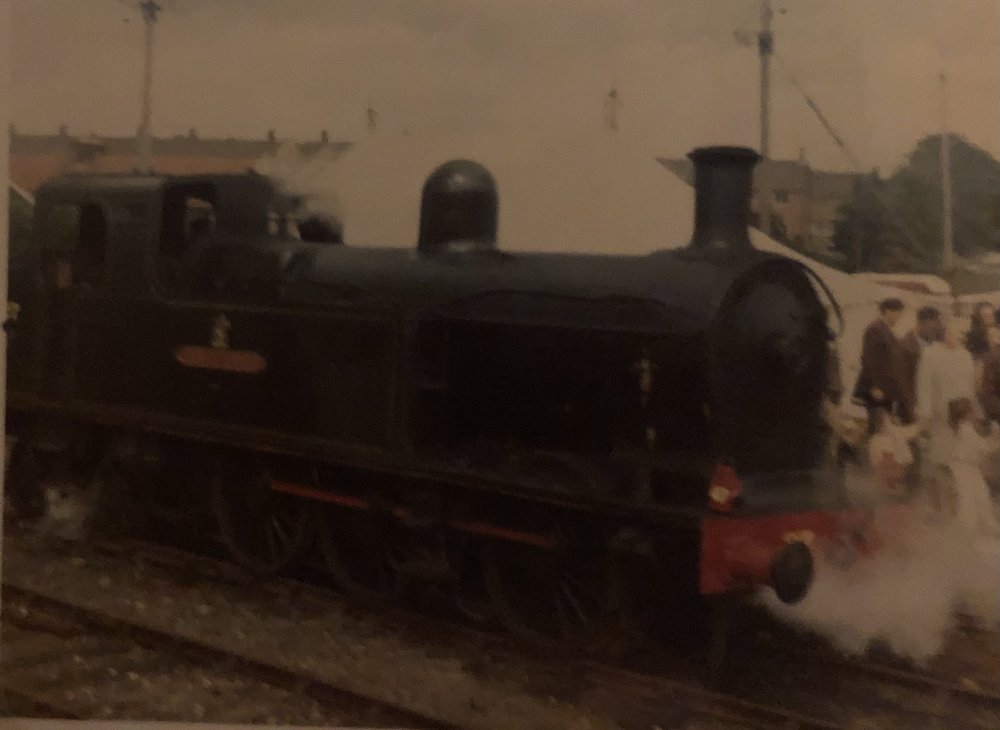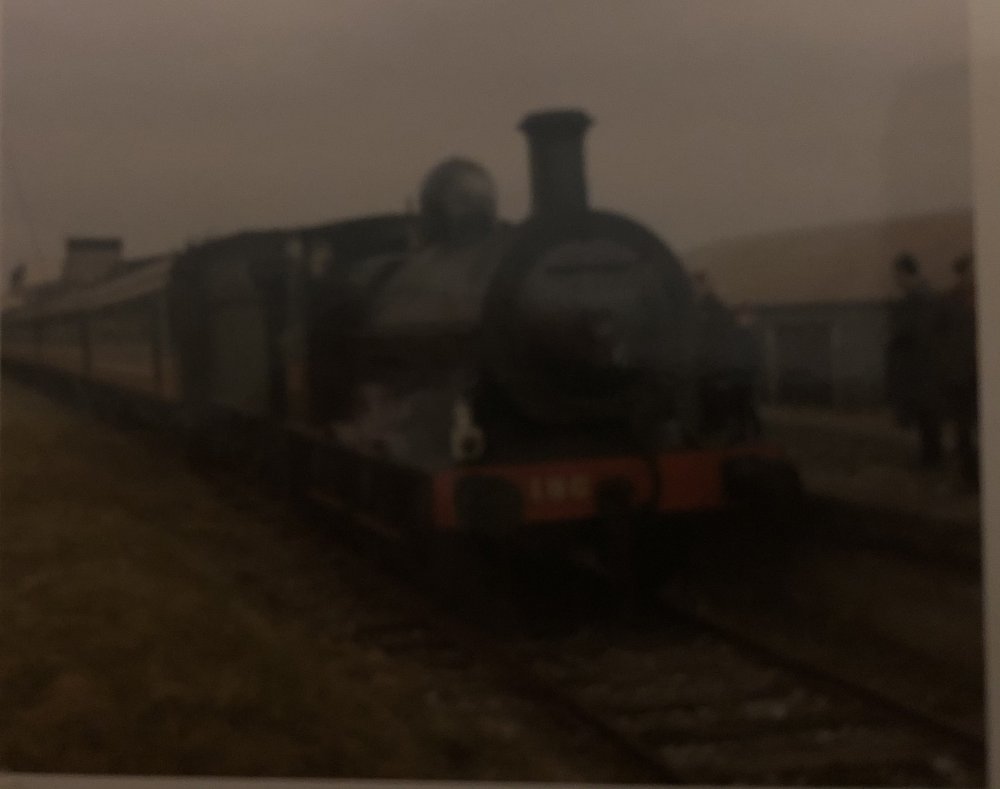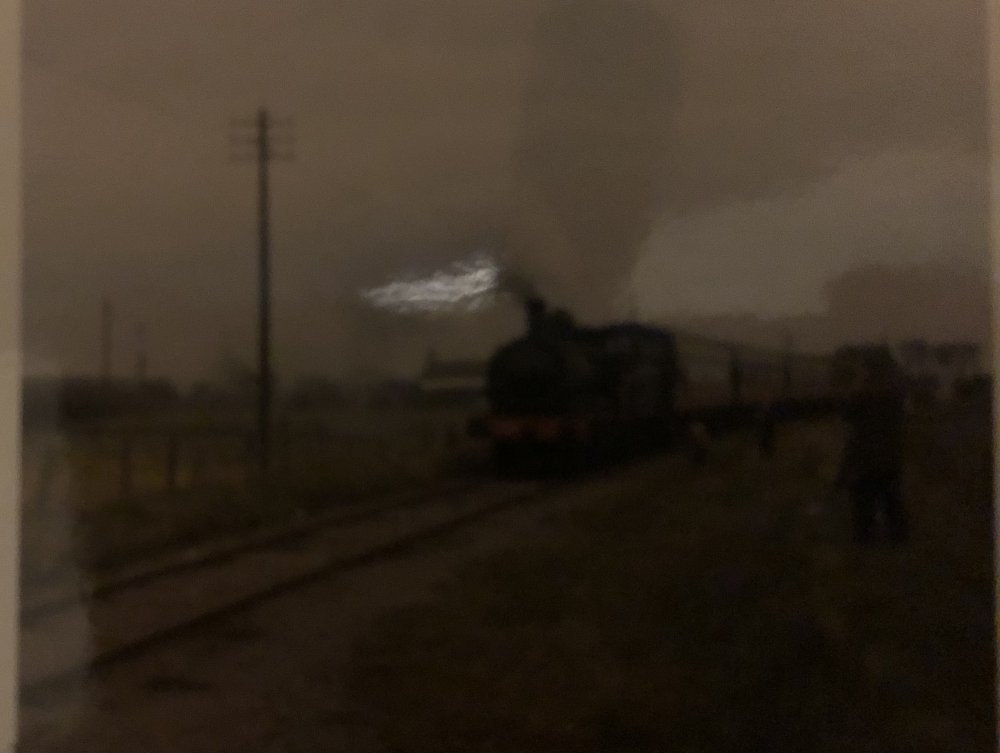-
Posts
15,910 -
Joined
-
Last visited
-
Days Won
394
Content Type
Profiles
Forums
Events
Gallery
Blogs
Community Map
Everything posted by jhb171achill
-
Superb!!!!!!
-
Question: It's pretty obvious to anyone here that my personal interests go back to pre-1970, and the late steam era in particular, so this might seem like a silly question, as "modern image" is not at all my area of expertise; Why is it that in Ireland we have to have tiny little goods trains of only 18 wagons? I know they did tests with more, but decades ago they were well able to operate trains of twice that length and weight. So it can't be weight, it's can't be station size, it certainly isn't lack of power from a 201 or 071? Other countries seem to be able to operate interminably long goods trains............. I see the Taras passing my window daily. Three laden trips to Dublin port. Great for us enthusiasts, but with as little as 6 or 8 wagons, and usually 10, 11 or 12. An 071 should be able to lift almost all in one go, I would have thought? I hope there's a practical reason; I would hate to think that some anti-rail jobsworth has decreed that it's "unsafe", or that operating anything longer contravenes section 34.860/2a of some obscure and restrictive set of rules that don't seem to bother any other EU country!
-
In a livery as old as that, who actually owns it now? Is it routine for container companies to repaint containers they buy second hand or inherit?
-
The South Wexford Railway
jhb171achill replied to thewanderer's topic in Photos & Videos of the Prototype
Sadly, yes! I've an idea that it wasn't the only one to have an old livery door..... -
And there's Galteemore Senior, the man who would written the cheque! 1980, though - surely it was earlier than that?
-
It's OK - I always pick out the "mings" before I eat it.
-
You'll notice the average speed on the line was an hour and a quarter for 19 3/4 miles - or 15.8 miles per hour. With the stops taken into account, that rises to about 19 mph. Allow for slowing down and "accelerating" away from the several stations, and you've a top speed of 25mph.......
-
These are the sectional running times in minutes. Goods trains and mixed trains were given the same timings on lines like this. When it was a line with nothing but mixed trains (or cattle specials) in the normal course of things, they would still include passenger timings in case of, say, a GAA special or a Knock special, which would be passenger only. On some branch lines, the service was one mixed and one or two passenger trains.
-
What is WRONG with these utter morons!!!!
-
I had a yang ming tonight, but with chips and chilli sauce rather than baby powder..........
-
May 1948 timetable for the Kenmare branch trains, quite typical of branches then. Morning and evening mixed train, nothing on Sundays.
-
It was my first camera! Not one of the very highest quality by any means......... You've enhanced it about as well as it can be.......
-
Did it even have a trolley service?
-
I would just like to add that if any re-run of the Cravens is ever done, they have dark coloured seats, not bright blue. They were never bright blue, and in original livery generally a dark grey, almost black..... Anyone here ever put themselves through this ordeal?
-
The one time I ever travelled in one of these tubular pressure cookers it was a three car set on the Limerick - LJ shuttle, with a 121 at the Limerick end. As far as I know, it wasn't long before the railcars took over.
-
That is correct. Within a week, she was to be steamed for her boiler test. She was lit up, and after many hours couldn't raise enough steam to complete the test. Thus, she failed it and that was that. She is evidently so far beyond restoration that a total rebuild would be necessary - and THAT verdict was made thirty years ago! So it's now almost half a century since she was steamed - and then only as described above.
-
It's the wrong shade of grey, though.
-
How do you put a DCC chip in the horse?
-
VERY poor photos, amongst the earliest I took of railway subjects with a cheap camera. 1. Whitehead Open Day, 1972; my first and last experience of “Lough Erne” in steam. 2 & 3. The RPSI’s Coolnamona tour, about the same time, 1971/2? Someone will know. This is 186 in the Curragh Siding.
-
S E R I O U S L Y good!!
-
When it closed in 1976, it and Ardrahan still had one. I'm not sure about Craughwell. Mallow retained GSR signs quite late on, and GSR enamel footbridge signs were certainly in Carrick-on-Suir until the last couple of years at least. A painted-on version at Cherryville Junction was also still extant until quite recently. Though closed to passenger traffic, the first time I traversed the Foynes branch, probably about 1978, Patrickswell and Ballingrane still had GSR enamel station nameboards, and possibly a few other places - despite not seeing a passenger train since 1963. I've a vague notion that there were a few on the Sligo line well into the 1970s, but I could be wrong.
-
I deliberately took that top pic in 1975 (I think) exactly for that purpose - modelling GSR enamel signs! From memory of walking on that very platform (when I was taking pics of the sign!), the gravel was about an inch diameter. Gravel platforms were very common in rural locations.
-
I know! I don't know what became of it, but ebay wasn't in existence in those days!
-
Believe it or not................ There was one of those, years ago, kicking about in one of the RPSI dining cars, long before the RPSI had any interest in diesels. As far as I know, it went into the rubbish at one stage, as nobody knew what it was!
-
Irish Footbridge - Expression of Interest
jhb171achill replied to RobertRoche's topic in Irish Models
It would be - Tuam was on the GSWR system after they took over the WLWR........
.png.c363cdf5c3fb7955cd92a55eb6dbbae0.png)









